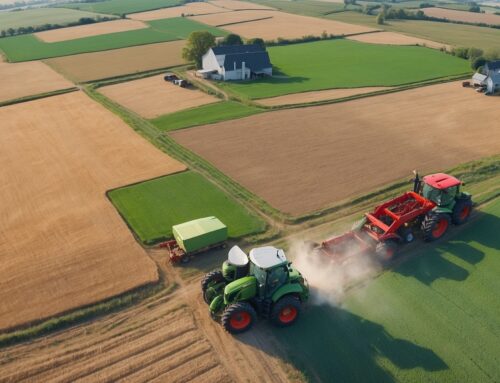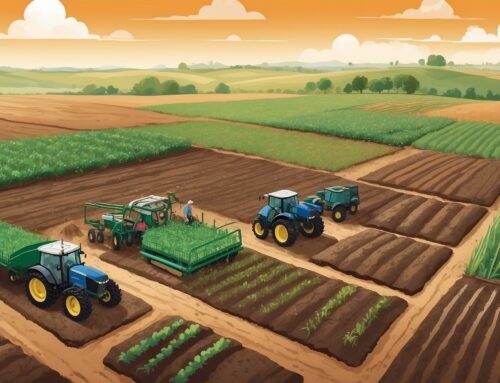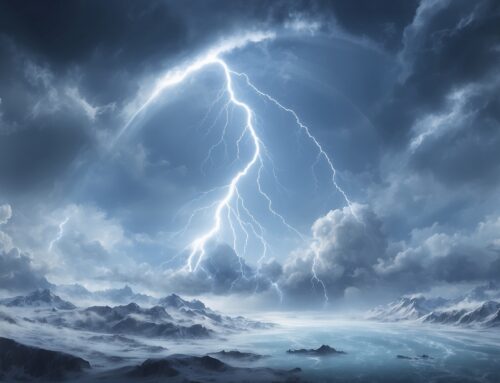Howdy, fellow farmers! Drought—that dreaded word we all wish we could forget, but let’s face it, it’s as much a part of farming as tractors, muddy boots, and the occasional flat tire. We can’t control the weather (trust me, I’ve tried shouting at the sky, and it didn’t help), but we can control how we respond to it. Thanks to modern technology, we’ve got more tools than ever to fight back when Mother Nature decides she’s not sending any rain our way. Let’s talk about how we can use these tools to manage drought and make sure we’re not left high and dry.
Understanding the Beast: Drought’s Impact on the Farm
First, let’s talk about drought and why it’s such a pain. When the rain stops coming, we all know what happens: crops start stressing, soil moisture drops, and we’re left making tough calls about where to put our limited water. It’s like trying to make a pie for Thanksgiving and realizing you only have enough crust for half the pie—you’ve got to make some sacrifices.
Drought doesn’t just mean reduced yields; it also means an increase in pest pressure, lower soil quality, and the overall health of our farm taking a nosedive. But thanks to technology, we’ve got ways to take the guesswork out of drought management. Let’s get into it.
Precision Irrigation: Putting Every Drop to Work
In the middle of a drought, it’s all about making the most of the water you’ve got. That’s where precision irrigation comes in. With the help of soil moisture sensors and IoT technology, we can make sure that every drop of water is going to the right place. Forget the old days of just watering everything and hoping for the best—now, we’ve got real-time data showing us exactly which parts of our fields are thirsty and which are doing okay.
Precision irrigation systems, like drip irrigation, paired with smart sensors, can tell you where water is needed most. It’s like having a farmhand that knows every single plant personally and waters each one exactly as much as it needs—not a drop more, not a drop less. This approach not only helps during drought but also cuts down on our water bill (which we all know is a plus).
Predictive Analytics: Getting Ahead of the Problem
Wouldn’t it be nice to know what’s coming before it actually happens? Well, with predictive analytics, we can get pretty darn close. By using historical weather data and combining it with the latest weather forecasts, we can predict when we might face a dry spell and plan accordingly.
If we know that a drought is coming, we can adjust our irrigation schedules, prepare for extra water storage, or even switch up the crops we’re planting to something more drought-resistant. It’s like playing chess with the weather—if you know the opponent’s next move, you’ve got a better chance of winning the game.
Drought-Resistant Crops: Playing it Smart
Speaking of drought-resistant crops, technology has also given us a leg up when it comes to choosing the right varieties for tough times. Advances in genetic research mean we’ve got more options for crops that can handle a little less rain and still come through with a decent yield. It’s not cheating; it’s just making sure you’re putting your money on a horse that can finish the race.
There’s a whole lot of science that goes into developing these crops, but the end result is simple: plants that use water more efficiently and stay productive even when the weather isn’t cooperating. Pair these crops with a good irrigation strategy, and you’ve got a fighting chance when the rain clouds refuse to show up.
Monitoring Soil Health: Keeping an Eye on the Foundation
It’s easy to forget that a drought isn’t just tough on the plants—it’s tough on the soil too. Soil can get compacted, nutrients can become less available, and it just generally becomes less hospitable to crops. This is where soil monitoring tools come into play.
By using soil moisture sensors, pH sensors, and nutrient monitors, we can keep tabs on how our soil is handling the drought. We can add amendments when needed, adjust our tillage practices to help keep moisture in the soil, and even use cover crops to protect our fields. Soil health is the foundation of everything we do, and keeping it in good shape during a drought means we’ll be ready to bounce back when the rains finally do come.
Water Conservation: Making Every Drop Count
Technology is also helping us conserve the water we have. Rainwater harvesting systems, greywater recycling, and on-farm water storage are all tools we can use to make sure we have more water on hand when the going gets tough. Pair that with tools like weather monitoring stations and evapotranspiration models, and we can get even more precise about when and where to use the water we’ve saved.
We’ve all heard the saying, “You can’t control the weather, but you can control how you prepare.” Well, it’s true, and using these technologies to conserve water is one of the best ways to make sure we’re ready for the next dry spell.
Conclusion: Technology is Our New Farmhand
Drought is never going to be easy, and it’s not something we can just ignore and hope goes away. But with the tools we have today, we can be a whole lot smarter about how we deal with it. From precision irrigation and predictive analytics to drought-resistant crops and soil monitoring, technology is stepping up to the plate as the best farmhand we’ve ever had.
We might not be able to make it rain, but we can make sure we’re ready for the dry days—and that’s about as good as it gets in this line of work. So here’s to working smarter, making every drop count, and keeping our fields thriving, no matter what Mother Nature has in store for us. Stay dry, stay smart, and let’s beat this drought together.





